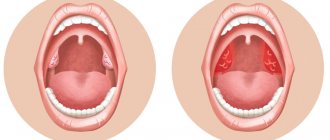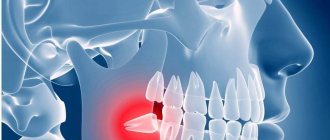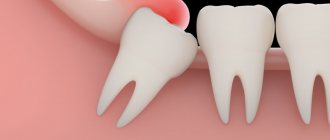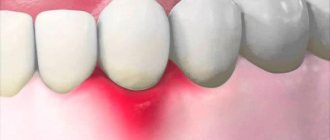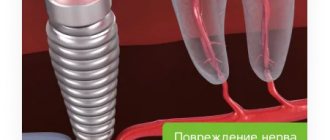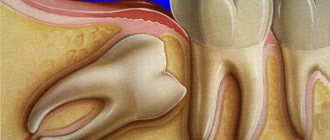Causes of throat swelling
The choice of treatment tactics is closely related to the cause of throat swelling. It can be inflammatory or non-inflammatory in nature. Etiological factors of throat edema:
- pathologies of the immune system;
- respiratory diseases;
- allergic reaction;
- a bite of an insect;
- tumor process;
- injuries.
Sometimes you can discover the cause on your own: people remember an injury or an insect bite. But in most cases, it is worth seeing a doctor to establish the correct diagnosis.
How to recognize swelling of the throat
It can be difficult to understand that the throat is swollen, since the process begins inside and it is difficult to see it on your own. Symptoms of pathology:
- pain and discomfort when swallowing;
- labored breathing;
- stiffness of neck movements;
- irradiation of pain to the ear area;
- dry hacking cough;
- sensation of a foreign body in the larynx;
- change in voice timbre;
- visual increase in neck thickness.
Sometimes swelling of the throat is accompanied by an increase in body temperature. This is typical for an infectious process.
Diseases accompanied by swelling of the throat
Swelling in the larynx and neck can be a sign of certain diseases. Pathologies in which the throat swells:
- viral infections - ARVI, influenza;
- bacterial diseases - acute respiratory infections, typhus, measles, tonsillitis, scarlet fever, pharyngitis;
- suppuration in the oropharynx - abscess of the tonsils or epiglottis, retropharyngeal abscess;
- some chronic infections - tuberculosis, syphilis;
- inflammation of the cartilage of the larynx;
- allergy;
- endocrine disorders;
- stagnation of blood in the pharynx, neck or larynx;
- tumor formation of a malignant or benign nature.
Depending on the diagnosis, it becomes clear how to treat a swollen throat. If the cause is not clear, the effectiveness of therapy is in question.
How to treat tonsil diseases?
First, you need to figure out why the tonsil may become inflamed on one side. It is best to consult a doctor. The otolaryngologist will examine the patient, prescribe additional examinations, if necessary, and select treatment.
Quite often, swollen tonsils or an inflamed tonsil on one side are only a complication of another disease. Gargling or washing the tonsils in this case will only have a temporary effect if the cause of the disease is not eliminated.
READ ALSO: Herpes virus - development in spring Treatment of herpes Herpes vaccine at the Central Clinical Hospital.
Gargling
How to treat a throat if the tonsil hurts on one side - it depends on the accompanying symptoms. It is recommended to start by rinsing with antiseptic agents. If the cause is a bacterial infection of the tonsils, rinsing will help eliminate pathogenic bacteria, and thereby reduce pain and swelling. In cases where pain is associated with injury to the tonsil, rinsing will reduce the risk of secondary infection and speed up the recovery of damaged tissue. For treatment, you can use both pharmaceutical and folk remedies.
- Sea salt. The simplest and most affordable remedy that you can probably find at home, or at least in the nearest supermarket. Salt rinses are recommended for moderate pain, including tonsil injuries. To prepare the solution, dissolve a teaspoon of the product in a glass of water.
- Soda with salt. Another simple remedy, the so-called first aid for a sore throat. To prepare the solution, mix a teaspoon of baking soda and salt in a glass of water. The water should be at a comfortable temperature, about 37 degrees.
- Iodine solution. This remedy has proven itself excellent for stomatitis on the tonsils and tonsillitis. To prepare the solution, mix 5 drops of iodine in a glass of water and gargle thoroughly.
- Chlorophyllipt. Another effective gargle. Used for tonsillitis and pharyngitis. The product is concentrated, diluted with water in proportions of 1 to 5.
- Among folk remedies, you should pay attention to decoctions of chamomile, sage, and calendula. To prepare the solution, pour 1 large spoon of dried raw material into 500 ml of water and cook for 15 minutes. Then cool and use to gargle.
If the tonsil hurts on one side, treatment should be comprehensive. So, you need to gargle at least three times a day. Additionally, you can use various lollipops for tonsillitis and pharyngitis. Unilateral tonsillitis, or inflammation of the tonsil on one side, is treated with Strepsils, Septefril, Hexoral.
To prevent the gland, which is inflamed due to injury, from becoming infected, you can lubricate the damaged area with Lugol's solution.
Compresses
It is strictly not recommended to apply compresses to the throat at very high temperatures.
Compresses help bring down the temperature, but are generally useless for the throat. If your body temperature has risen to 38 degrees, you can put a cool compress on your forehead. At temperatures above 39 degrees, vodka compresses and rubbing are effective.
Traditional medicine suggests placing compresses directly on the neck. However, this method has many contraindications:
- purulent inflammation of the tonsils,
- heat,
- enlargement or inflammation of the cervical lymph nodes.
To reduce pain when swallowing, make compresses from warm crushed potatoes, vinegar solution, and vodka. Such remedies help reduce swelling of the tonsils.
Inhalations
To combat the pain inherent in enlarged tonsils, inhalations can be used. This method has proven itself well in the fight against colds, but is ineffective against tonsillitis or pharyngitis. At the same time, inhalations will prevent a sore throat if one (right or left) tonsil is injured, and also strengthen the immune system and prevent infection.
For inhalation you can use:
- drug Pinosol,
- Chlorophyllipt,
- natural pine essential oil (3 drops per liter of water),
- steam from boiled potatoes.
Inhaling warm steam helps relieve cold symptoms and is effective if sinusitis is the cause of swollen tonsils on one side.
Note! The simplest and most affordable inhaler is the Zvezdochka pencil, containing essential oils of mint, eucalyptus, and camphor. The product can be purchased at any pharmacy at an affordable price.
READ ALSO: Manifestations and treatment of eczema, when pain develops - Therapy
Inhalations are prohibited at high temperatures.
General therapy
If a person has a swollen tonsil on one side, what to do with this symptom will depend on other signs. In the case of a bacterial infection, your doctor may prescribe broad-spectrum antibiotic tablets. Such drugs cannot be taken independently, without a prescription.
For viral diseases, special immunomodulators are prescribed. Immune medications may be recommended for a speedy recovery. As a folk remedy, you can take tincture of echinacea or propolis.
For severe tonsillitis, the doctor may recommend rinsing the lacunae of the tonsils. This procedure is carried out in case of accumulation of purulent masses in the tonsils and the formation of plugs.
Eagle-Sterling syndrome is treated with novocaine blockades, glucocorticosteroids or surgery if conservative therapy is ineffective. In this case, only a doctor selects a treatment regimen; self-medication can be harmful to health.
Detoxification
Rosehip tea helps a lot
In infectious diseases, intoxication of the body is observed. At high temperatures, a person loses a lot of fluid through sweat, and dehydration occurs. Due to the inflammatory process, weakness and nausea are observed. In such cases, detoxification therapy is necessary. It is carried out either with special mineral-containing solutions (Regidron, Regidron Bio), or by increasing the consumption of pure liquid.
Decoctions of medicinal herbs with a diuretic effect will also come to the rescue. Traditional medicine advises drinking a rosehip decoction, which not only removes toxins, but also strengthens the immune system due to its high vitamin C content. Herbal teas (chamomile, mint, lemon balm) and a decoction of lingonberry leaves are also useful.
Drinking plenty of fluids when sick
If a tonsil that is swollen on one side is the result of a bacterial infection, for example, with tonsillitis, you must follow several recommendations regarding drinking regime and diet. Doctors recommend increasing the amount of fluid you drink to speed up recovery. Recommended to drink:
- clean water at a comfortable temperature,
- herbal teas,
- fruit drinks and compotes,
- warm milk with honey.
Milk reduces discomfort in the throat and eliminates the sore throat characteristic of pharyngitis. It is recommended to drink at least two liters of clean water per day. It is better to drink half a glass every 20-40 minutes.
Having figured out what to do if the tonsil is swollen on one side, you should pay attention to nutrition. It is necessary to remove from the diet any solid food that can irritate the tonsils. It is recommended to increase the consumption of fruits and vegetables, it is better to puree them or drink freshly squeezed juices.
Any food should be at a comfortable temperature; food that is too hot or too cold should be avoided.
Diagnosis of pathology
Only a doctor can make an accurate diagnosis based on a complete examination. If you have a history of allergies and swelling develops rapidly, you should call an emergency medical team. Before doctors arrive, it is worth opening the windows or taking the person out into the fresh air, removing tight clothing, and giving an antihistamine according to age. If the course is not so rapid, you can consult a therapist.
Examination plan:
- taking anamnesis (hypothermia, additional symptoms, contact with patients, etc.);
- inspection;
- general blood analysis;
- swab from the surface of the oropharynx (if necessary);
- Ultrasound of the thyroid gland (as directed by an endocrinologist).
If the therapist could not determine the cause of the edema, the patient is referred to an otolaryngologist or allergist. The next step will be to contact an endocrinologist, infectious disease specialist, and phlebologist. But most often the problem is solved in the therapist’s office.
Swallowing disorders: causes, “coma in the throat” syndrome
The swallowing process is repeated periodically, not only while awake, but also during sleep. Like breathing, this process often occurs involuntarily. The average frequency of swallowing is 5-6 times per minute, however, with concentration or strong emotional arousal, the frequency of swallowing decreases. The swallowing process is a clear sequence of muscle contractions. This sequence is provided by a region of the medulla oblongata called the swallowing center.
Swallowing difficulties can develop without a person noticing. Impaired oral feeding, weight loss, a significant increase in the time it takes to swallow food - all this can be a manifestation of a violation of swallowing function. Signs of difficulty swallowing may include:
- throwing back the head or moving the head from side to side, helping to move the food bolus;
- the need to wash down food with water;
Despite pronounced difficulties in swallowing, the tongue and the muscles that lift the velum palatine can function normally.
A swallowing disorder is medically called dysphagia.
What diseases cause difficulty swallowing:
Swallowing disorders can lead to serious consequences:
- exhaustion of the body, weight loss;
- cough during and after swallowing, constant choking;
- feeling of lack of air while swallowing;
- pain and shortness of breath;
- development of pneumonia;
Depending on the causes of swallowing disorders, there are:
- Mechanical (organic). A similar violation can occur when the size of a piece of food and the lumen of the esophagus do not match.
- Functional. This type of swallowing difficulty occurs when peristalsis and relaxation are impaired.
Both mechanical and non-mechanical problems can occur for a variety of reasons. Organic (or mechanical) swallowing disorder is associated with direct external or internal pressure on the esophagus. In such a situation, the patient says that it is difficult for him to swallow food. There may be several reasons for mechanical impact:
- Blockage of the esophagus by any foreign body or food;
- Narrowing of the lumen of the esophagus, which can occur due to:
- edema resulting from an inflammatory process (stomatitis, sore throat, etc.);
- damage or scars (burns from taking pills, scars from operations or after inflammation);
- malignant and benign formations;
- stenosis;
3. External pressure may be a consequence of swelling of the thyroid gland, compression by blood vessels, etc.
Functional swallowing disorders include disorders associated with impaired muscle function. Violations can also be divided into 3 groups:
- Disorders associated with tongue paralysis, brain stem damage, sensory disturbances, etc.
- Disorders associated with damage to the smooth muscles of the esophagus. Such violations lead to weakness of contractions and impaired relaxation.
- Disorders associated with diseases of the muscles of the pharynx and esophagus;
Other causes of difficulty swallowing include: Parkinson's disease, parkinsonism syndrome, inflammation of the esophageal mucosa and connective tissue diseases.
“Lump in the throat” syndrome The feeling of a lump in the throat (globus pharyngeus syndrome) is one of the most common complaints when visiting an otolaryngologist. During their lifetime, approximately 45% of people experience this sensation. This syndrome began to be studied as one of the manifestations of hysteria, but during the study it became clear that only a part of the cases were due to psychiatric reasons.
There are several reasons for the sensation of a lump in the throat:
- There really is something in the goal and this object interferes with swallowing. The sensation of a lump in the throat in this case can be caused by swelling of the uvula of the soft palate, a tumor or cyst, or an enlarged palatine or uvular mendala. The cases described above are quite rare and can easily be excluded during examination at a doctor's appointment.
- There is a feeling of a “lump in the throat”, but there are no objects directly in the throat that could interfere with swallowing. These are the most common cases. Most often, this sensation is caused by reflux disease. Reflux is the backflow of stomach contents into the esophagus and further into the throat. Muscle spasm in the throat, which causes the feeling of a “coma,” is provoked by gastric contents (the acidic contents of the stomach burn the mucous membrane of the esophagus and throat). Also, the symptom of “coma in the throat” can be accompanied by chronic pharyngitis.
- Psychological factors. Often the appearance of the “coma in the throat” syndrome is facilitated by stressful situations, a state of strong excitement or fear.
The “globus pharyngeus” syndrome has not been fully studied to date, but in most cases it does not pose a threat to human life, and the causes that caused it are quite easy to eliminate. However, to determine the exact causes and prescribe timely treatment, an in-person examination by a doctor is necessary.
If you have difficulty swallowing or feel a lump in your throat, get a consultation or make an appointment on the Clinical Brain Institute website.
How to help with throat swelling
If swelling of the throat develops rapidly, only an injection of adrenaline and glucocorticoids can help the patient. Therefore, it is better to call doctors and give the patient an antihistamine. They are available in tablets, drops, and injection solutions. Injections of the drug work the fastest.
If swelling of the throat occurs for other reasons, complex treatment is prescribed. Drugs used as therapy:
- anti-inflammatory drugs - reduce swelling that occurs due to inflammation;
- antibiotics - to treat diseases caused by bacteria;
- diuretics - reduce swelling when severe;
- glucocorticosteroids - act as an emergency measure for severe swelling;
- antihypoxants - prevent the development of tissue oxygen deficiency.
To alleviate the condition, inhalations with antiseptic solutions are also used. They allow you to speed up your recovery.
Read also: Sore throat when swallowing
Dear patients! Remember that only a qualified doctor can make an accurate diagnosis, determine the causes and nature of the disease, and prescribe effective treatment. You can make an appointment with our specialists or call a doctor at home by calling 8-(4822)-33-00-33
Be healthy and happy!
Preventive measures
To keep your tonsils healthy, you need to:
- avoid hypothermia, stress and anything that potentially threatens a decrease in immunity,
- promptly treat any infectious diseases,
- visit the dentist regularly, avoid caries and treat your teeth in a timely manner,
- avoid injury to the tonsils.
If a person is prone to throat diseases, you can consult a doctor about taking prophylactic medications to boost immunity. Quitting smoking will help reduce the risk of developing tonsillitis and pharyngitis.
News MirTesen
